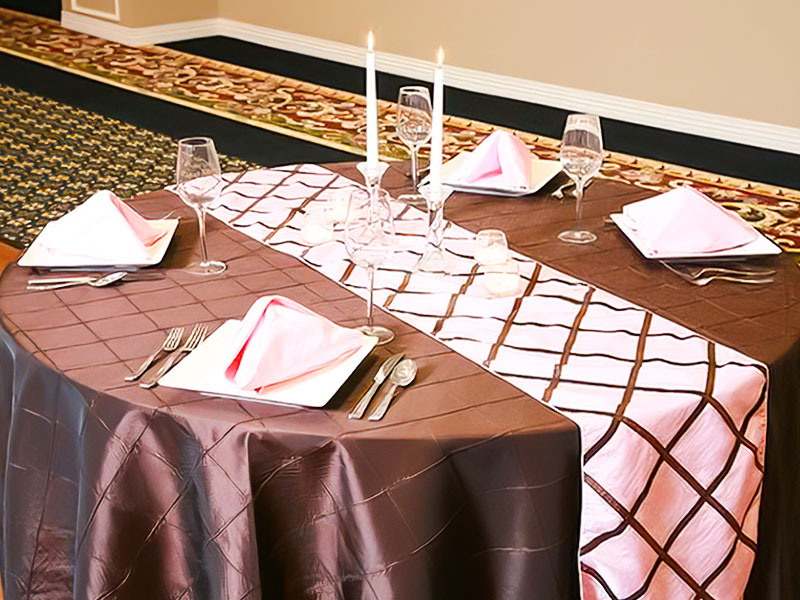Linen Fabric: Understanding the Origins, Features, and Advantages of This Elegant Natural Material
Linen, the polished and stylish fabric understood for its luxurious feel and ageless allure, has a rich background that dates back centuries. Past its historic significance, linen possesses distinctive features that establish it apart from various other textiles, making it a prominent selection in the globe of style and indoor design.
Historic Roots of Linen
Bed linen, a fabric with old beginnings, has actually played a substantial function throughout history due to its amazing residential or commercial properties and flexibility. Dating back to ancient human beings, linen has been a prized textile for its remarkable breathability, resilience, and lavish feel.
In medieval times, bed linen continued to be extremely esteemed, with its manufacturing coming to be a substantial sector in Europe. The adaptability of linen made it a staple fabric for garments, home products, and even cruises for ships. Throughout the Renaissance, linen was further elevated in standing, with its usage in great garments and household bed linens representing wealth and social standing.
Unique Qualities of Bed Linen
Distinguished for its phenomenal breathability and durability, linen textile boasts unique attributes that have actually made it a favored textile for centuries. One of the crucial functions of bed linen is its exceptional breathability, which allows air to move through the textile conveniently.
Bed linen material also ends up being softer and extra comfy with each clean, boosting its allure over time. Its capability to stand up to dirt and discolorations, along with its hypoallergenic residential properties, even more add to the appeal of bed linen as a costs fabric choice.
Advantages of Making Use Of Bed Linen
With its phenomenal breathability and durability, bed linen textile provides a wide range of benefits that make it a prominent selection for various clothing and house items. Among the key benefits of using bed linen is its breathability. Bed linen fibers are hollow and enable far better air movement, maintaining the body cool and comfortable in hot weather. Furthermore, linen is highly absorbent, with the ability of soaking up dampness without really feeling moist, making it perfect for summer garments.
Moreover, bed linen is a durable textile that becomes softer and much more comfortable with each laundry, ensuring long life and minimizing the requirement for regular replacements. This resilience additionally reaches its resistance to moths and carpet beetles, making linen things much less susceptible to damage compared to various other products.
Moreover, linen is a lasting option, as it is made from the flax plant, which calls for less water and pesticides to expand compared to cotton. Its natural fibers are additionally naturally degradable, adding to eco-friendly methods. Finally, the benefits of using linen encompass comfort, resistance, sustainability, and toughness to parasites, making it a versatile and appealing option for various applications.
Versatile Applications of Linen
:max_bytes(150000):strip_icc()/sage-teddy_46-7e12be353dfc4e69b1afc52bf5af2820.jpg)
Linen drapes bring a touch of downplayed high-end to living rooms, enabling natural light to filter with while including appearance and deepness to the space. Pillow covers, table bed linens, and even upholstery benefit from linen's versatile buildings, adding a touch of refinement and convenience to any type of home setup.
Sustainability in Bed Linen Manufacturing

In addition, bed linen is an eco-friendly product, ensuring that at the end of its lifecycle, it redirected here will naturally disintegrate without damaging the environment. The durability and longevity of linen products additionally add to sustainability by lowering the frequency of replacements. In addition, bed linen's all-natural protecting residential or commercial properties can conserve power by keeping people cool in warm weather condition and cozy in chillier climates, possibly decreasing the reliance on synthetic home heating and cooling systems. Embracing linen as a lasting option in textiles lines up with the growing international emphasis on ecologically conscious techniques in various industries.
Conclusion
To conclude, bed linen fabric has an abundant historic background, distinct qualities, and countless benefits. Its convenience in applications and lasting production techniques make it a highly sought-after product in numerous sectors. Linen's special properties such as breathability, durability, and moisture-wicking capabilities set it apart from various other materials, making it a lavish and useful selection for garments, home fabrics, and other items. Overall, linen remains a timeless and environmentally friendly alternative for customers read this seeking top quality and sustainability.
Throughout the Renaissance, linen was further elevated in condition, with its usage in great garments and family linens signifying riches and social standing. (flat sheet)
Prominent for its outstanding breathability and longevity, bed linen textile flaunts distinct qualities that have actually made it a favored fabric for centuries.With its phenomenal breathability and sturdiness, linen textile supplies a multitude of advantages that make it a preferred option for various garments and household items. Pillow covers, table bed linens, and even upholstery advantage from linen's flexible homes, including a touch of class and comfort to any type of home setup.
Linen's distinct properties such as breathability, sturdiness, and moisture-wicking capacities set it apart from various other textiles, making it a practical and glamorous selection for apparel, home textiles, and various other products.